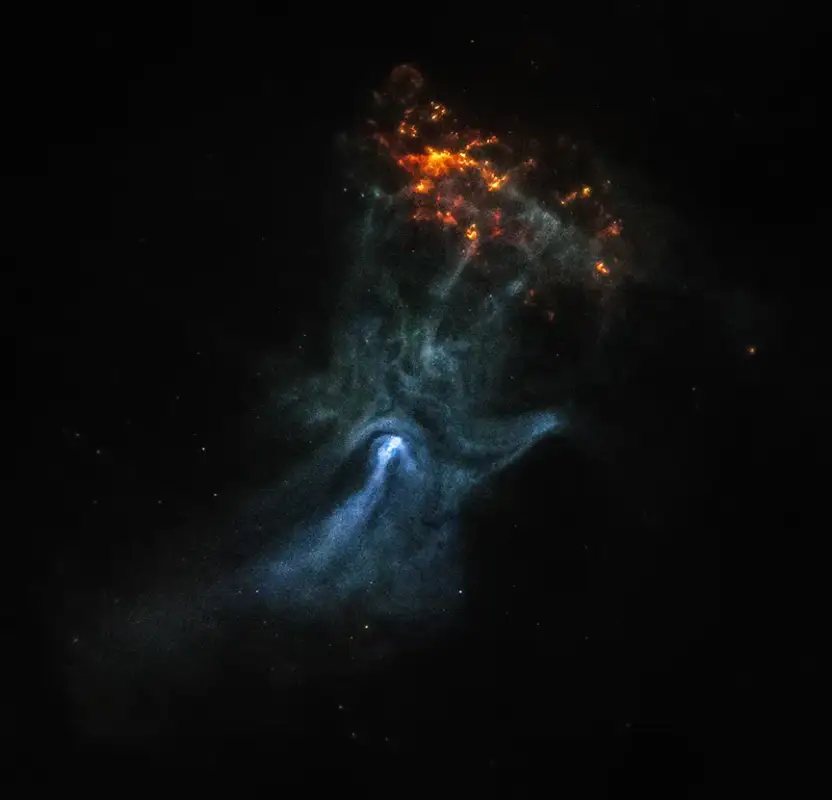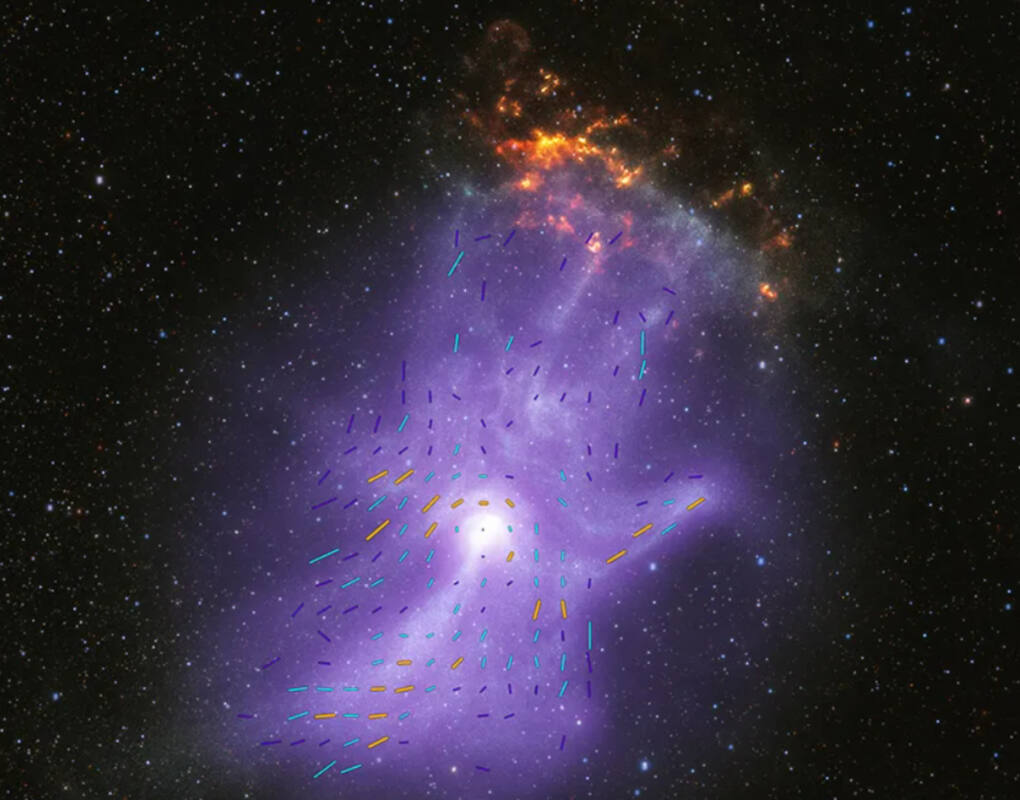Need a hand?
How about the “ghostly cosmic hand” of a star corpse that exists 16,000 light-years away from Earth?
With the help of NASA‘s newest X-ray telescope, the Imaging X-ray Polarimetry Explorer (IXPE), researchers at Stanford University have given us a whole new view of pulsar PSR B1509-58 and its pulsar wind nebula, known as MSH 15-52. And NASA’s announcement calling it a cosmic hand is spot on, given that the X-ray telescopes even showed researchers shapes akin to bones.
“The IXPE data gives us the first map of the magnetic field in the ‘hand,’” said Stanford’s Roger Romani, who led the study. “The charged particles producing the X-rays travel along the magnetic field, determining the basic shape of the nebula, like the bones do in a person’s hand.”
MORE: Video shows NASA spacecraft flying through massive solar explosion

NASA researchers first discovered pulsar PSR B1509-58 in 2001. When a star runs out of fuel, it collapses into itself and forms a neutron star. Most neutron stars are undetectable, but when they are observable, they are generally seen as a pulsar.
A pulsar is a rotating neutron star. Two beams of powerful light shine from opposite magnetic poles, and these lights spin as the pulsar rotates, thereby periodically becoming visible to Earth. This is why they are known as cosmic lighthouses, because the lights move like the beams of a lighthouse.
MORE: NASA scientists discover Mars is spinning faster

The pulsar PSR B1509-58 was first discovered with the Chandra X-ray over 20 years ago, but astronomy researchers at Stanford University wanted to combine this powerful telescope with NASA’s newest X-ray telescope, the IXPE.
By combining these two powerful telescopes, the researchers were able to get a jaw-dropping look at what they’re calling the “bones” of the pulsar’s “hand.”
“We’re all familiar with X-rays as a diagnostic medical tool for humans,” says Josephine Wong, a Stanford Ph.D. student and co-author of the study, in a press release issued by NASA. “Here we’re using X-rays in a different way, but they are again revealing information that is otherwise hidden from us.”
You can see the recorded images on Chandra X-ray Observatory’s YouTube channel below:
These images give us more than just a groundbreaking map of the pulsar’s magnetic field. It also shows us how pulsars behave, as the researchers can view and study the way the particles move in different areas of the pulsar.
“We’ve uncovered the life history of super energetic matter and antimatter particles around the pulsar,” says co-author Niccolò Di Lalla in the press release. “This teaches us about how pulsars can act as particle accelerators.”
Any products or services mentioned above were selected independent of sales and advertising. However, Simplemost may receive a small commission from the purchase of any products or services through an affiliate link to the retailer's website.
This story originally appeared on Simplemost. Check out Simplemost for additional stories.


